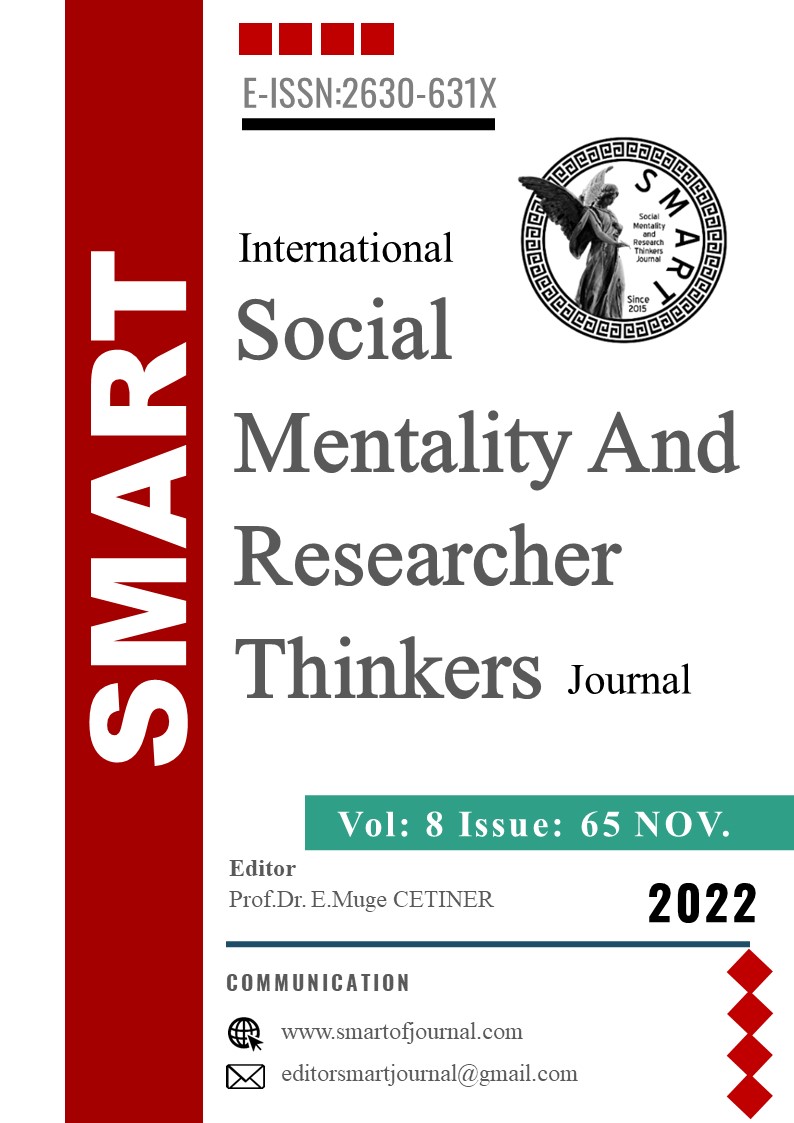Author :
Abstract
Bu çalışmada daha önce geliştirilen Karanlık Üçlü Ölçeği'nin bazı geçerlik çalışmaları yürütülmüştür. Bu kapsamda iç tutarlılık güvenirlik, yapı geçerliliği, kriter bağıntılı geçerlik, ayırt edici geçerlik gibi çeşitli psikometrik işlemler yapılmıştır. Çalışmaya 17-75 yaşları arasında 210 kadın ve 162 erkek olmak üzere toplam 372 kişi katılmıştır. Kriter bağıntılı geçerlik ve ayırt edici geçerlik çalışmaları için, Kirli Düzine Ölçeği, Kısaltılmış Karanlık Üçlü Ölçeği, Gözden Geçirilmiş Kısa Form Altı Faktörlü Kişilik Envanteri, Buss-Perry Saldırganlık Ölçeği, Empati Ölçeği Kısa Formu ve Belirti Tarama Listesi-90-Revize Edilmiş Formu kullanılmıştır. Ölçeğin geliştirme çalışmasıyla da benzerlik gösteren iç tutarlılık güvenirlik katsayıları bu çalışmada, Makyavelyanizm faktörü için 0,92, Narsisizm faktörü için 0,89 ve Psikopati faktörü için 0,89 olarak hesaplanmıştır. DFA sonuçları ölçeğin zayıf da olsa üç faktörlü model uyumuna sahip olduğunu göstermiştir. Karanlık Üçlü Ölçeği'nin ve kullanılan diğer ölçeklerin Makyavelyanizm faktörleri arasında 0,35 ve 0,48, Narsisizm faktörleri arasında 0,38 ve 0,45, Psikopati faktörleri arasında 0,45 ve 0,47 korelasyon katsayıları hesaplanmıştır. Ayrıca saldırganlık genel toplam puanı ile Makyavelyanizm faktörü arasında 0,35, Narsisizm faktörü arasında 0,45 ve Psikopati faktörü arasında 0,58; Uyumluluk faktörü ile Makyavelyanizm faktörü arasında -0,27, Narsisizm faktörü arasında -0,33 ve Psikopati faktörü arasında -0,49; Dürüstlük-Alçakgönüllülük faktörü ile Makyavelyanizm faktörü arasında -0,39, Narsisizm faktörü arasında -0,21 ve Psikopati faktörü arasında -0,27 düzeyinde ilişki belirlenmiştir. Bunların yanı sıra Belirti Tarama Listesi-90-Revize Edilmiş Formu alt boyutları ile Psikopati faktörünün orta düzeyde ilişkiler gösterdiği görülmüştür. Karanlık Üçlü Ölçeği faktör toplam puanları açısından sosyo-demografik değişkenler olarak yaş, eğitim düzeyi ve medeni durum kritik değişkenler olarak belirlenmiştir. Sonuçlar, ilgili alan yazın doğrultusunda karşılaştırılarak ele alınmış ve ölçeğin psikometrik özelliklerinin iyi olduğu görülmüştür.
Keywords
Abstract
In this study, some validity studies of the Dark Triad Scale, which was previously developed, were carried out. In this context, various psychometric processes such as internal consistency reliability, construct validity, criterion-related validity, and discriminant validity were performed. A total of 372 people, 210 women and 162 men, between the ages of 17-75 participated in the study. For criterion-related validity and discriminant validity studies, the Dirty Dozen Scale, the Short Dark Triad Scale, the HEXACO Personality Inventory-Revised Short Form, the Buss-Perry Aggression Questionnaire, the Baron Empathy Scale Short Form, and Symptom Checklist-90-Revised Form were used. The internal consistency reliability coefficients, which are similar to the development study of the scale, were calculated as 0.92 for the Machiavellianism factor, 0.89 for the Narcissism factor, and 0.89 for the Psychopathy factor in this study. CFA results showed that the scale had a three-factor model fit, albeit weakly. Correlation coefficients between the Dark Triad Scale and other scales used were calculated 0.35 and 0.48 for Machiavellianism factors, 0.38 and 0.45 for Narcissism factors, 0.45 and 0.47 for Psychopathy factors. In addition, a correlation of 0.35 between the general total score of aggression and the Machiavellianism factor, 0.45 between the Narcissism factor and 0.58 between the Psychopathy factors was determined. Also, there were correlations of -0.27 between the Agreeableness factor and the Machiavellianism factor, -0.33 between the Narcissism factor and -0.49 between the Psychopathy factor, and -0.39 between the Honesty-Humility factor and the Machiavellianism factor, -0.21 between the Narcissism factor and -0.27 between the Psychopathy factors. In addition, it was observed that the Sub-dimensions of the Symptom Checklist-90-Revised Form and the Psychopathy factor showed moderate correlations. Age, education level and marital status were determined as critical variables among socio-demographic variables in terms of Dark Triad Scale factor total scores. The results were compared in line with the relevant literature, and it was seen that the psychometric properties of the scale were good.





